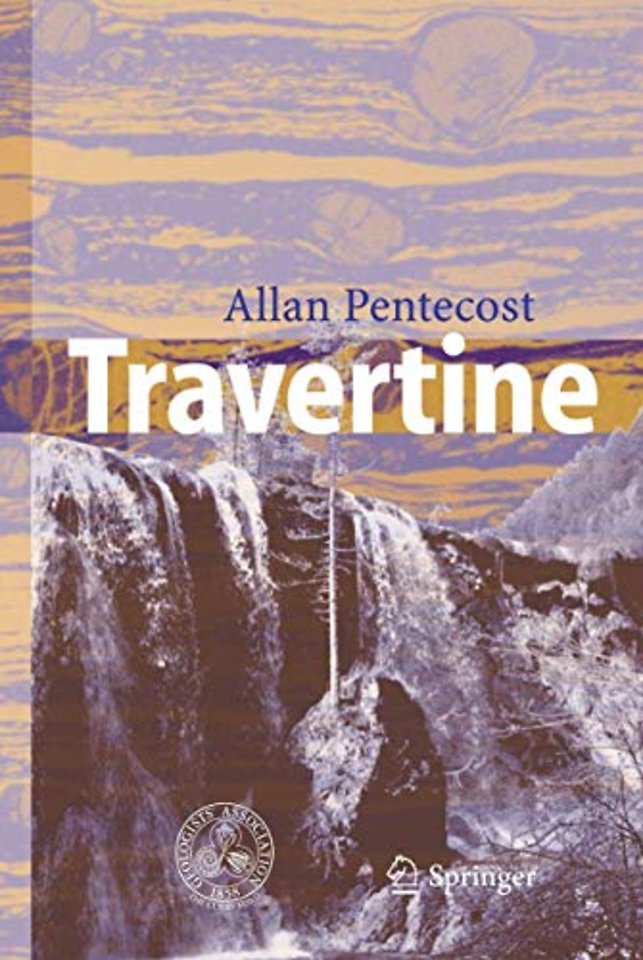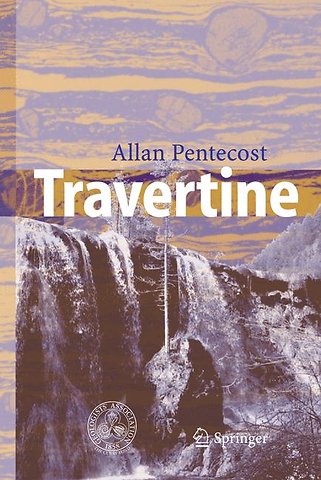Travertine
Paperback Engels 2011 9789048168910Samenvatting
uring the spring of 1960, an uncle showed me a ‘petrifying spring’ near Plaxtol in Kent Dwhere twigs had been encased in a calcareous jacket. A twig was collected and having - cently been given I. Evan’s Observer’s Book of Geology by my parents, I found a photograph of another petrifying spring and an explanation of its origin. In those days, Derbyshire was too far for a holiday destination, and I took little further interest until a research studentship with Professor G. E. Fogg became available in 1971. Tony Fogg had recently moved to the University College of North Wales, Bangor and the research was to be into cyanobacterium mats, with fieldwork along the Red Sea coast. The fieldwork never materialised but my interest in algal mats had been aroused. A chance stroll along the Bangor shore revealed beautifully calcified cya- bacterium mats, and Tony generously allowed me to investigate these instead. The old Plaxtol collection was retrieved and yielded abundant cyanobacteria. It became apparent that here was a wealth of information about a rock whose formation was so rapid, that the process could be studied in days rather than years – an exceptional state of affairs. A search of the literature also revealed that the rock, a form of travertine, had other unusual features.
Specificaties
Lezersrecensies
Inhoudsopgave
1.1 Definitions
1.2 Travertine compared with other non-marine carbonates
1.3 Etymology
1.4 History of the science of travertine formation 2. Classification And Origins
2.1 Travertine precipitation
2.2 Classification on carrier CO2
2.2.1 Meteogene travertines
2.2.2 Thermogene travertines
2.2.2.1 Magmatic generation of carrier
2.2.2.2 Decarbonation
2.2.2.3 CO2 from of heated organic matter
2.2.3 ‘Orgamox’ waters and other CO2 sources
2.3 Other classifications
2.4 Sources of bedrock carbonate and calcium 3. Travertine Fabric
3.1 The microfabric
3.1.1 Calcite fabrics; micrite and sparit
3.1.2 Calcite fabrics: dendritic and similar forms
3.1.3 Calcite fabrics: shrubs and bushes
3.1.4 Aragonite fabrics
3.2 Mesofabrics
3.2.1 Porosity
3.2.2 Bedding and jointing
3.2.3 Floe, nodules and thinolite
3.2.4 Biofabrics
3.2.5 Coated grains: ooids and oncoids
3.2.5.1 Ooids
3.2.5.2 Oncoids
3.2.5.2.1 Fluvial oncoids
3.2.5.2.2 Lacustrine oncoids
3.2.6 Lamination
3.2.6.1 Banding within a fabric
3.2.6.2 Alternation of fabrics
3.2.6.3 Stromatolites
3.3 Diagenesis
3.3.1 Primary fabric and cement
3.3.2 Meteoric diagenesis
3.3.2.1 Percolation of stream and groundwater
3.3.2.2 Dissolution of carbonate
3.3.2.3 Recrystallisation of calcite
3.3.2.4 Recrystallisation of aragonite
3.3.2.5 Sparmicritisation
3.3.3 Burial diagenesis 4. Morphology And Facies
4.1 Authochthonous travertines
4.1.1 Spring mounds
4.1.2 Fissure ridges
4.1.3 Cascades
4.1.4 Dams
4.1.4.1 Minidams
4.1.4.2 Macrodams
4.1.5 Fluvial crusts
4.1.6 Lake deposits
4.1.6.1 Lacustrine crusts
4.1.6.2 Reefs
4.1.7 Paludal deposits
4.1.8 Cemented rudites and clasts
4.1.9 Speleothems
4.2 Allochthonous (clastic) travertines
4.3 Travertine caves
4.4Post-depositional effects on morphology
4.4.1 Karstification
4.4.2 Soils
4.4.3 Mass movement
4.4.4 Effects on fluvial systems 5. Limestone Solution, Groundwater And Spring Emergence
5.1 Limestone solution and groundwater
5.1.1 Meteogene source waters
5.1.2 Thermogene and superambient meteogene source waters
5.2 Spring emergence - structural controls 6. Chemical Composition Of Travertine-Depositing Source Waters
6.1 Meteogene source waters
6.1.1 The CO2-Ca-H system
6.1.2 Mg, Na, SO4 and Cl
6.1.3 Calcium hydroxide source waters (invasive meteogenes)
6.1.4 Superambient meteogene source waters
6.1.5 ‘Orgamox’ waters
6.2 Thermogene waters
6.2.1 The CO2-Ca-H system
6.2.2 Mg, Na, SO4 and Cl
6.3 Minor components of source waters
6.3 Saline waters 7. Mineralogy And Elemental Composition
7.1 Calcite and aragonite mineralogy
7.2 Occurrence of calcite and aragonite in travertine
7.3 Autochthonous carbonate minerals excluding CaCO3
7.4 Calcite and aragonite crystal habit
7.4.1 Calcite
7.4.2 Aragonite and vaterite
7.5 The calcium carbonate content of travertine
7.6 Trace constituents of calcite and aragonite
7.6.1 Strontium
7.6.2 Magnesium
7.6.3 The alkali metals
7.6.4 Iron and manganese
7.6.5 Phosphorus
7.6.6 Other elements
7.7 Autochthonous non-carbonate minerals
7.7.1 Gypsum
7.7.2 Barytes
7.7.3 Mn and Fe minerals
7.7.4 Sulphur
7.7.5 Silica
7.7.6 Other minerals
7.8 Allochthonous components
7.9 Fluid inclusions
7.10 Organic matter content
7.11 Fluorescence and phosphorescence 8. Stable Isotopes Of Travertine And The Associated Waters
8.1 Oxygen
8.1.1 The hydrological cycle
8.1.2 Oxygen isotopes in carbonates
8.1.3 Oxygen isotopes in travertine
8.1.4 Oxygen isotope equilibrium
8.1.4.1 Kinetic disequilibrium caused by CO2
Rubrieken
- advisering
- algemeen management
- coaching en trainen
- communicatie en media
- economie
- financieel management
- inkoop en logistiek
- internet en social media
- it-management / ict
- juridisch
- leiderschap
- marketing
- mens en maatschappij
- non-profit
- ondernemen
- organisatiekunde
- personal finance
- personeelsmanagement
- persoonlijke effectiviteit
- projectmanagement
- psychologie
- reclame en verkoop
- strategisch management
- verandermanagement
- werk en loopbaan

